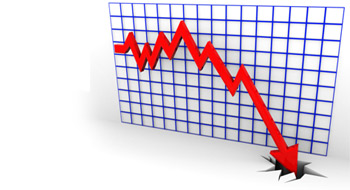

While the seeds of the financial crisis were sown before 2008, global economic confidence collapsed soon after Lehman Brothers filed for Chapter 11 bankruptcy on September 15 of that year.
Over the days and weeks that followed, markets around the world tumbled before bottoming out in the winter of 2009.
While the S&P/TSX Composite Index hasn’t managed to bounce back to its post-crisis high of 15,154.77, most global markets such as the S&P 500 and the FTSE 100 are at or near all-time highs.
Read: The financial crisis: Timeline
Here’s a look back at some of the stories that detailed the crisis.
Nightmare on Wall Street
North American markets fell following news that Lehman Brothers, the fourth largest investment bank in the United States, has filed for Chapter 11 bankruptcy. Read more…
Credit Crisis Worsens
The global credit crisis has hit Wall Street hard in the past 24 hours: Lehman Brothers has filed for bankruptcy protection, Merrill Lynch sold itself to Bank of America, and the State of New York has allowed AIG to borrow US$20 billion from its subsidiaries to fund day-to-day operations. Read more…
U.S. Federal Reserve Saves AIG
The United States Federal Reserve Board came to AIG’s rescue by authorizing the Federal Reserve Bank of New York to lend up to US$85 billion to the insurance company. In exchange, the U.S. government will own 79.9% of AIG. Read more…
Credit Crisis Spreads to Asset Managers
First, Lehman Brothers’ stock tanked and then AIG. Now, shares of asset managers such as State Street, Bank of New York Mellon and Northern Trust went on a wild ride because of worries about money market fund redemptions. Read more…
Paulson, Bernanke Ask Lawmakers to Act Fast
In testimony before the United States Senate Banking Committee, both Treasury secretary Henry Paulson and Federal Reserve chairman Ben Bernanke urged lawmakers to move quickly and approve a plan to buy troubled assets from financial institutions. Read more…
Future of U.S. Economy Uncertain as Bailout Fails
In a move that’s shocked stock markets and economists across North America, many U.S. House Republicans and a number of Democrats voted against the US$700-billion bailout bill. Read more…
Bailout Package Not Dead Yet
Despite the fact that the United States House of Representatives voted against the proposed economic bailout package, the Senate and U.S. President George W. Bush aren’t giving up just yet. Read more…
Bush Signs Bailout into Law
Shortly after the U.S. House of Representatives approved the revised US$700-billion bailout package on its second try, U.S. President George W. Bush signed the bill into law. Read more…
Markets Sink Pension Plans in Q3
Canadian pension plans experienced a rough third quarter as a result of market volatility and the credit crisis. Read more…
The United States Treasury Department plans to use US$250 billion of the $700 billion financial rescue plan to inject capital into banks by purchasing preferred shares.
Managing Your CAP During the Current Crisis
The dramatic sell-off in stock markets around the globe has been very bad news for participants in capital accumulation plans (CAPs). This is a critically important time for CAP sponsors to communicate with plan participants and to mitigate plan risks where possible. Read more…
U.S. Government Rides to Citigroup’s Rescue
The United States government has entered into an agreement with Citigroup to provide a package of guarantees, liquidity access and capital. Read more…
